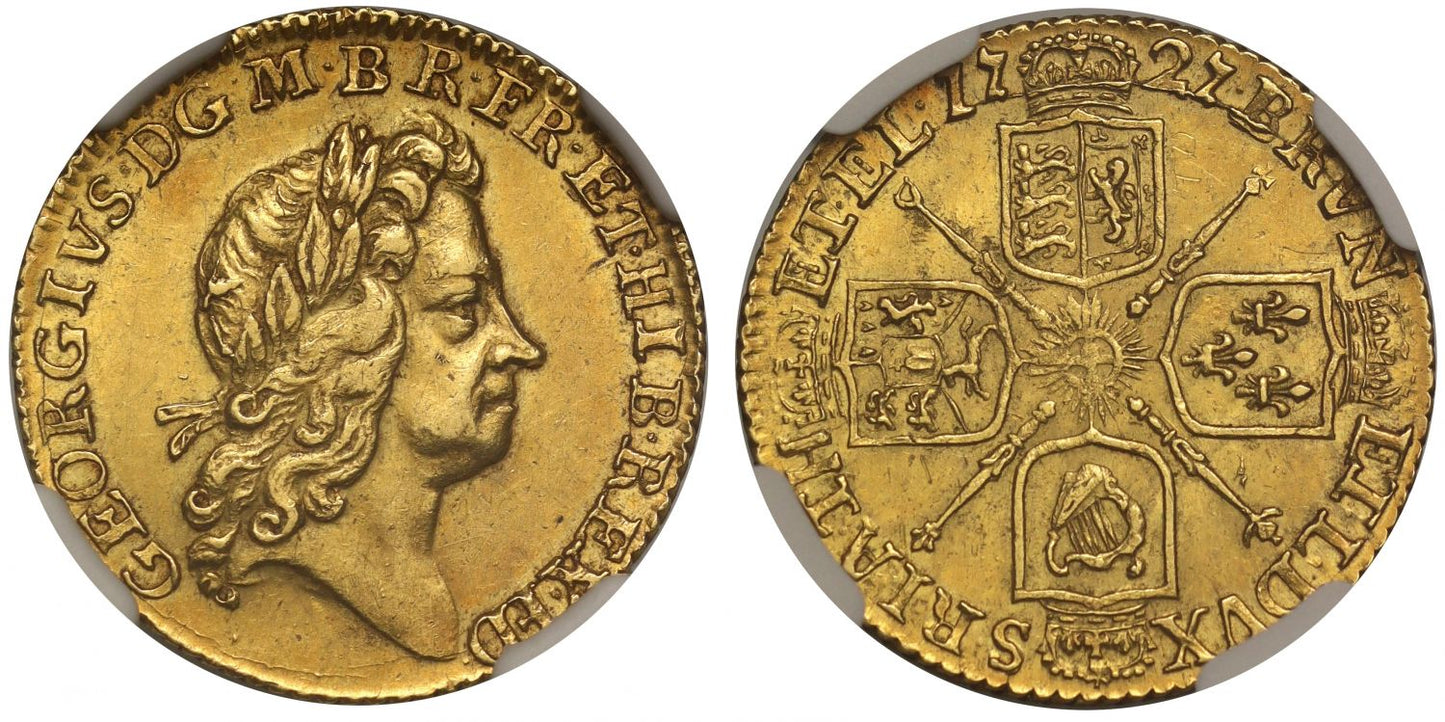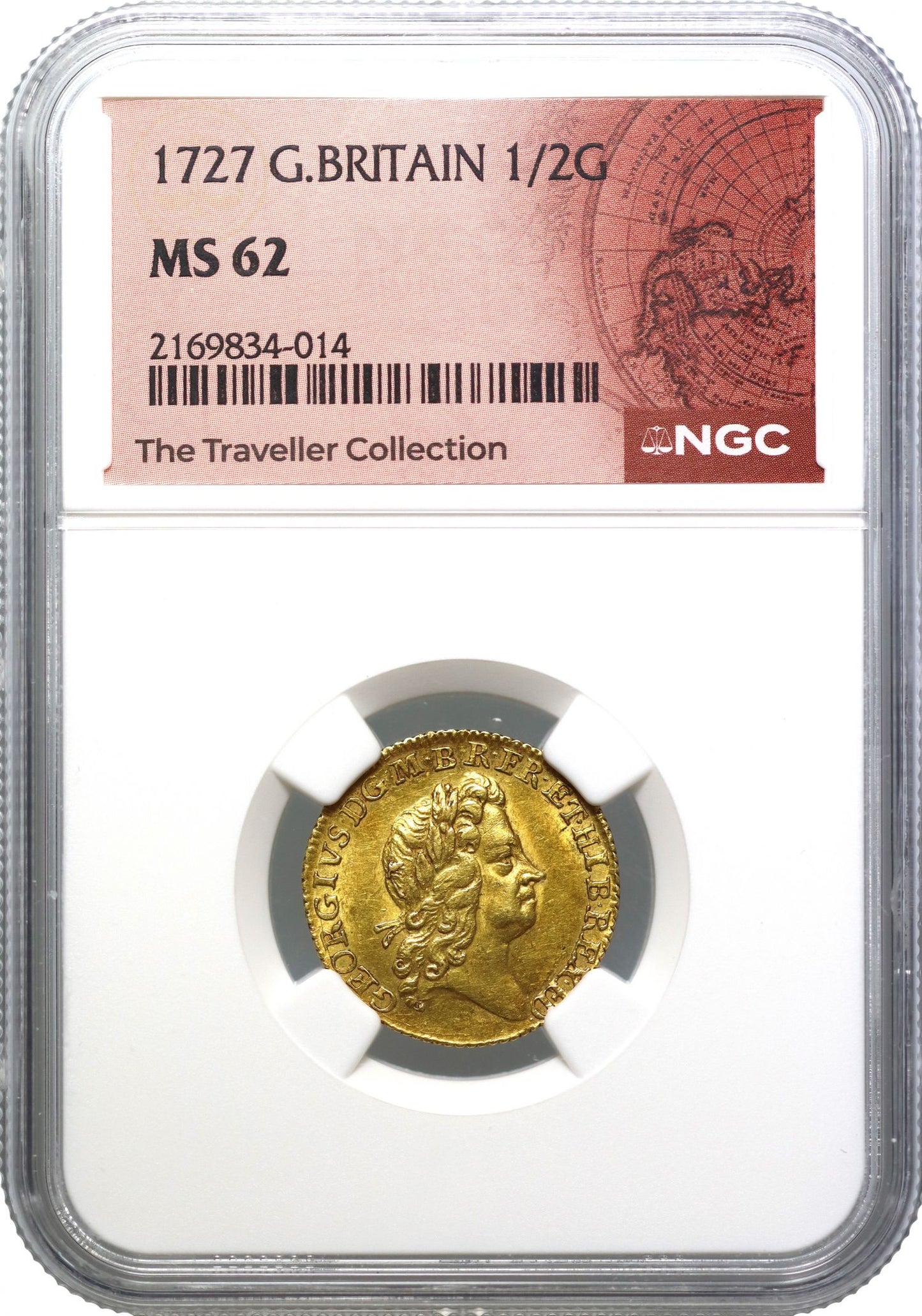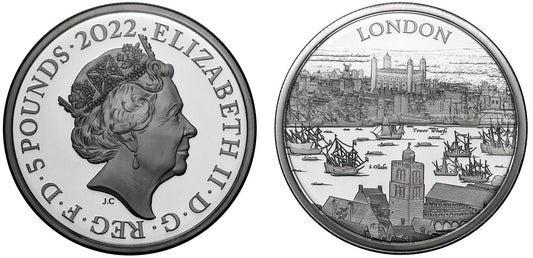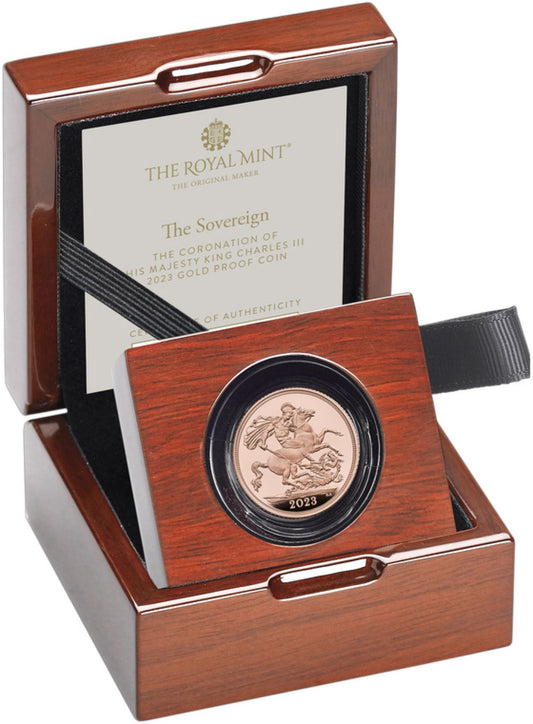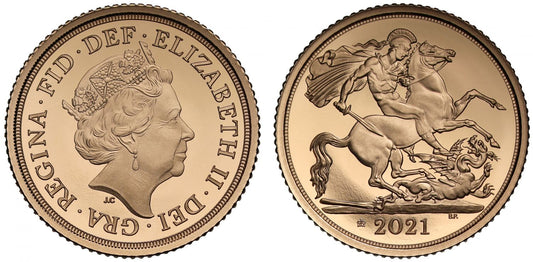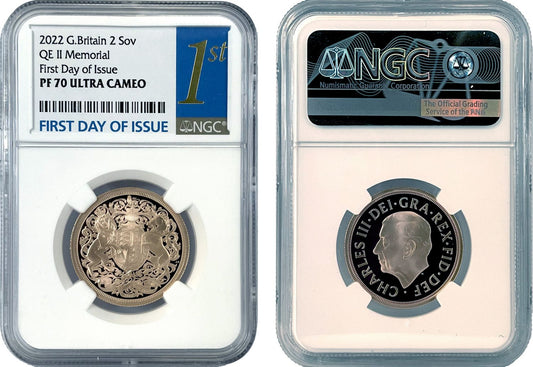FAQs
What makes a coin valuable?
I have coins to sell, what’s the next step?
How will my purchases be shipped?
What happens if I’m not entirely happy with my purchase?
George I 1727 Half-Guinea second bust MS62 joint finest graded at NGC
George I (1714-27), gold Half-Guinea, 1727, second older laureate head right, Latin legend and toothed border surrounding, GEORGIVS D. G. M. BR. FR. ET. HIB. REX. F.D, rev. crowned cruciform broad shields, incorporating the Arms of Hanover, ornamental sceptres in angles, garter star at centre, date either side of top crown, Latin legend and toothed border surrounding, .BRVN ET. L. DVX S.R.I.A.TH ET. EL. (Schneider -; Bull EGC 548; MCE 276; Traveller 2080 this coin; S.3637). Toned with some wear to high points and light surface marks, has been slabbed and graded by NGC as MS62 with special provenance label, rare final date of reign.
NGC certification 2169834-014 - we note as of June 2025 that this coin is the joint finest graded example at NGC out of eight pieces, for comparison PCGS have graded one example higher and one other example lower.
The Latin legends translates as on the obverse "George, by the grace of God, King of Great Britain, France and Ireland, Defender of the Faith" and on the reverse "Duke of Brunswick and Luneberg, High Treasurer and Elector of the Holy Roman Empire."
The total gold output for the calendar year of 1727 which encompasses issues of both George I and George II totalled £292,779.
The Half Guinea dated 1727 is the only gold coin of the reign of George I to be dated this late, the only other coins of 1727 for George I are the silver Shilling and Maundy coins from Fourpence to Penny.
Provenance Story:
This coin has a most intriguing provenance being hidden away in a European family collection since before World War II. The "Traveller" was a wealthy gentleman who having inherited a portion of a successful family company, made a fortune by promptly selling it and then travelled the world on what was in part an extended honeymoon for the decade between the Wall Street Crash of 1929 and the outbreak of World War II. With the financial instability of the great depression and after dabbling at first with gold bullion, he decided to form an enormous collection of world gold coins from ancient to modern whilst travelling the world to see the relevant dealers in their geographical locations to find the most appropriate coins. The result was a collection of some 15,000 coins, 1,700 of which we are told are British, with all going into secure hiding as of 1940 when the nazi regime encroached on where our traveller was located. Sadly, the collector died of a stroke with the stress of the world situation at this time and the collection remained hidden away for decades, stored carefully in individual envelopes in cigar boxes within locked aluminium strongboxes, that were buried in the ground in a field at the collector's property. His wife carried the secret of the burial location for the decades following and reaching the end of her life some 50 years later divulged the secret to her only daughter, whereupon in the 1990s the family retrieved all the coins intact and secured them safely in a bank vault until it was time to sell by auction in 2025. Though we often hear of buried treasure or hoards of coins from antiquity in the ground, it is not often we hear of a sophisticated coin collection actually being buried for decades, an intriguing story to permanently associate with coins of the Traveller provenance which has been written about in newspapers and online worldwide. We are lucky enough to have secured a small number of rare British coins from this esteemed collection.
Provenance:
Ex The Traveller Collection.
FAQs
What makes a coin valuable?
I have coins to sell, what’s the next step?
How will my purchases be shipped?
What happens if I’m not entirely happy with my purchase?
